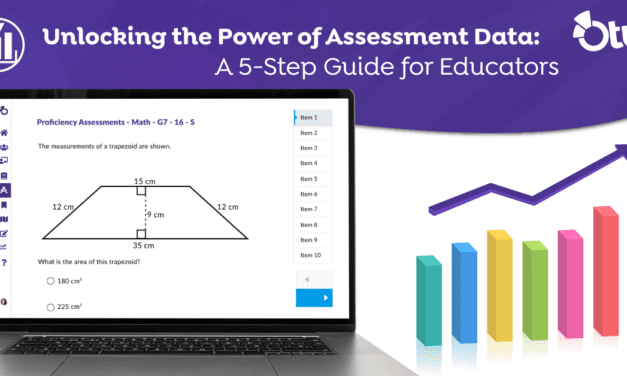Companies that create state or district assessments devote entire departments and immense resources into developing assessment items and connecting them to standards. When teachers and teams of educators develop assessments, they are too often left on their own. During this process, teachers need to be properly supported and have an understanding of the keys to developing a quality assessment. With this support and understanding, the time and energy teachers invest in assessment development will provide greater insight into student learning.
Rick Stiggins and Jan Chappuis1 have studied this topic for years and have developed a framework for teachers to use.
The five keys include:
- Clear purpose
- Clear targets
- Sound assessment design
- Effective communication
- Student involvement
The first key is to ensure you have a clear understanding of the purpose of the assessment.
Some questions to ensure you have a clear purpose are:
- Who will be using the data?
- How will the data be used?
- What information and level of detail are needed?
Who will be using the data?
The potential users include you as the individual teacher, other teachers on your team, special education or English language learner co-teachers, parents, students, administrators, school board, and/or the community.
If multiple types of users will be using the data from the assessment, try to understand the perspective they will bring to the analysis as you create the assessment.
The most common users of teacher-made assessments will be the individual teacher, the student, and the parent. At times, teachers don’t take into account the opportunity for students and parents to use the data from the assessment. The reality is students can be the most powerful users of the data. When students use assessment data to better understand their strengths and areas where they can grow, they become actively engaged in planning their learning.
How will the data be used?
Once you establish who is using the data, understanding how the data will be used is the next step.
If the teacher is the user, decide if the data will become part of the final grade for the student. The teacher may want to use the data to modify learning paths for students based on their performance or to determine which instructional strategies they will use in future lessons. If the teacher determines that some students haven’t performed well enough on the assessment, the next steps need to be decided. The data may also be used to determine if the student receives some type of reward.
If the student is the user of the data, they may use the information only to calculate their final grade and forget about the result afterward. Or the student could use the data to identify areas they need to review to improve their skills.
If the parent is using the data, the parent may use the scores to reward or punish their child. The parent could also use the data to determine if their child needs extra help in a given area.
What information and level of detail are needed?
Once you identify who is using the data and how it will be used, you can ensure the appropriate information and level of detail is provided to the users. Different users with different planned uses will likely need different information and detail. Be careful you don’t try to take a one-size-fits-all approach because that may not meet the needs of all the intended users. Remember to also provide background and context to the information so the users have the full picture they need.
Can the assessment accomplish the purpose intended?
Clarity on who will use the data and how the information will be used can drive what level of detail is generated by the assessment. The more focused the information, the more likely the assessment will accomplish the intended purpose. If one assessment is trying to accomplish too many purposes, the likelihood that all purposes are served equally and are served well is slim. An assessment cannot achieve all goals for all people. A clear purpose for an assessment is a key first step in the process of developing effective assessments.
References
Jan Chappuis, Rick Stiggins, Steve Chappuis, and Judith Arter, Classroom Assessment for Student Learning: Doing it Right—Using it Well, 2nd ed. (Boston: Pearson, 2012).





